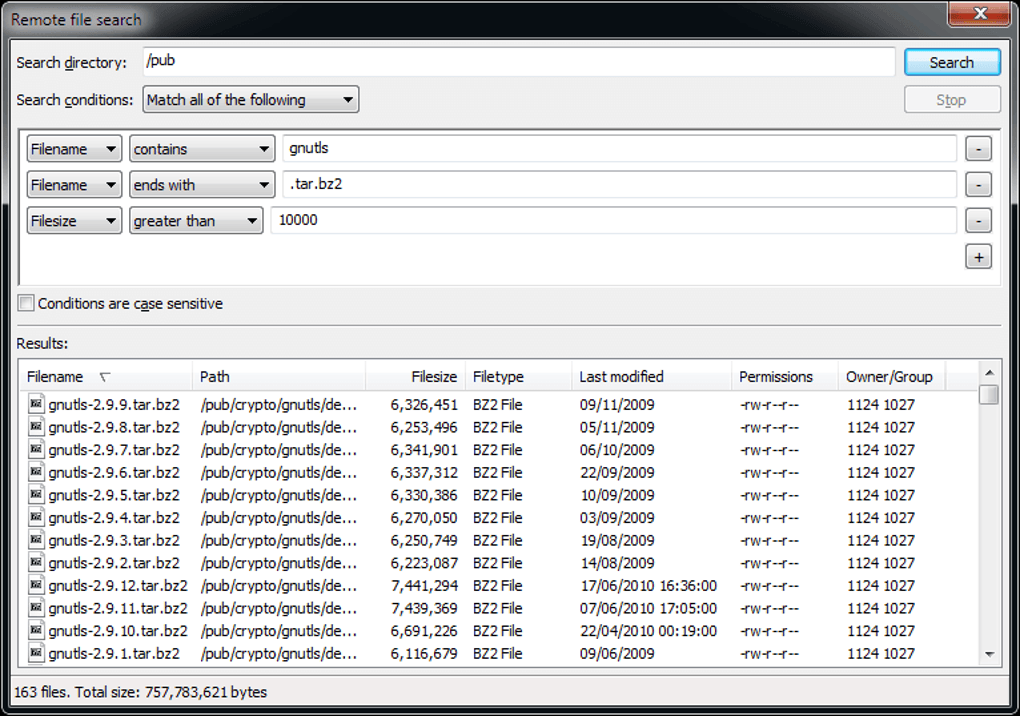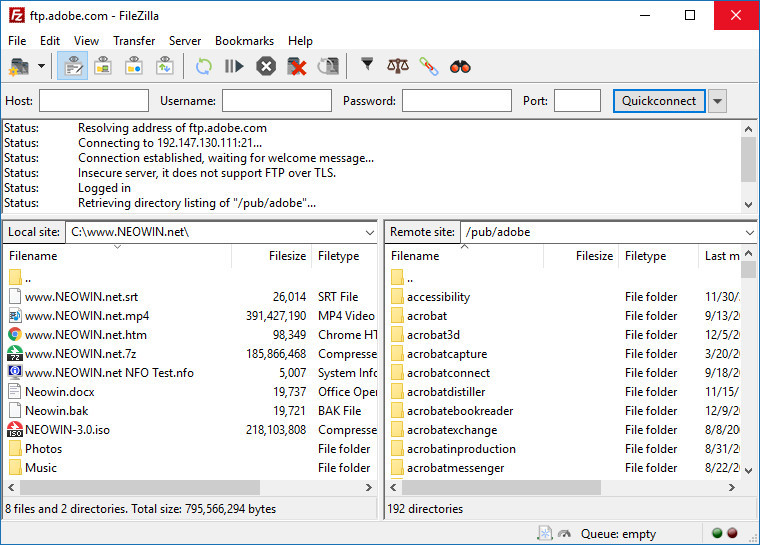

#Filezilla client password#
We will use the quickconnect bar for establishing the connection:Įnter the hostname into the quickconnect bar's Host: field, the username into the Username: field as well as the password into the Password: field. This is our (fictional) login data - please use your own data instead if you want to actively follow the tutorial. The first thing to do is connecting to a server. We assume that you already installed and started FileZilla Client ( installation instructions).
#Filezilla client how to#
If you already know how to use an FTP client, you may want to read the more advanced usage instructions instead. Welcome to the FileZilla Client tutorial. Note to editors: Please read this note on the tutorial scope before making additions.
#Filezilla client install#
Step 1 – Install FileZilla Server: To install the FileZilla Server, you will need to download the FileZilla Server installer from the Filezilla site as shown below and click on Download FileZilla Server.This tutorial in other languages: English (English), Deutsch (German), Español (Spanish), Français (French) The administrator in charge of the firewall should always require PASV connections. However, FTP clients shouldn’t rely on the default values, as this is unsecure. If the client fails to issue a PASV command, the Data Connection defaults to port 20. In the Passive Mode, the client issues a PASV command to indicate that it will wait “passively” for the server to supply an IP and port number, after which the client will create a Data Connection to the server. In passive mode FTP, the client initiates both connections to the server, solving the problem of firewalls filtering the incoming data port connection to the client from the server. Once the FTP client receives a port, it starts the second connection and sends data. Here, the client connects and sends the PASV command, which functions as a request for a port number to connect to. Passive FTP: This is also referred to as passive mode or PASV and it was developed to resolve the issue of servers initiating the connection to the client.


In an Active Mode FTP, the client issues a PORT command to the server signaling that it will “actively” provide an IP and port number to open the Data Connection back to the client. In an active mode connection, when the client makes the initial connection and sends PORT, the server will then connect back to the client’s specified data port from its local data port, which is port 20. That is, when a client and server intend to transfer data, they usually start a control connection first in order to negotiate the details of the Data Connection prior to opening it and transferring data. In this mode, the FTP client connects from a random port (n-1023) to the FTP server’s command port (21). You may also want to see this guide: Warning: FTP over TLS is not enabled, users cannot securely log in: You appear to be behind a NAT Router, please configure the passive mode settings and forward a range of ports in your router.Īctive FTP: This was originally the only method of FTP and is therefore often the default mode for FTP. Before proceed with the steps on how to install and connect to an FTP Server, I will like to briefly describe the difference between active and passive FTP as this is a prevalent question when dealing with Firewall configuration to support the deployment.


 0 kommentar(er)
0 kommentar(er)
